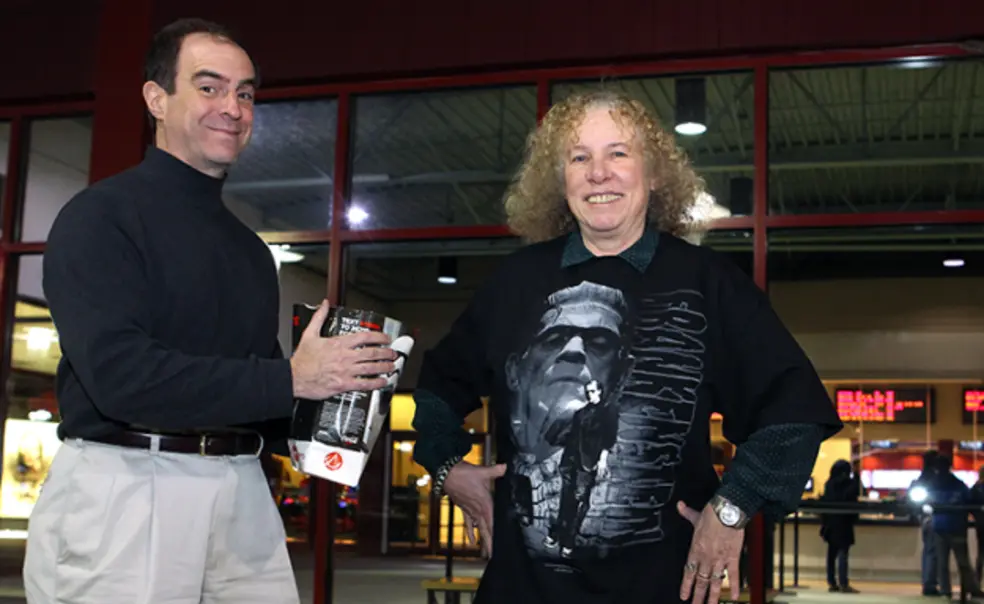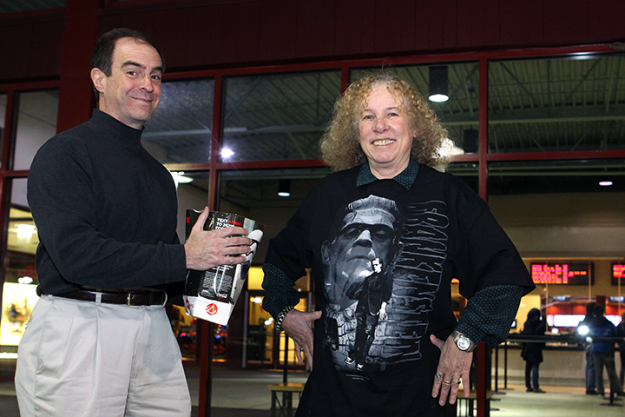PAW Goes to the Movies: ‘Victor Frankenstein,’ with Professor Susan Wolfson
Frankenstein the novel and Frankenstein the monster are distant cousins, at best. The creature in Mary Shelley’s 1818 classic has no name, no green skin, and no bolts in his neck. The title character, of course, is Victor Frankenstein, the man who created him. But tell that to the people who make Halloween costumes.
Director Paul McGuigan takes another crack at the misconstrued legend in the new film Victor Frankenstein, starring James McAvoy (X-Men: First Class) as Frankenstein and Daniel Radcliffe (Harry Potter) as Igor — another character who doesn’t appear in the novel. Who better to review it, though, than English professor Susan Wolfson? She is the co-editor, with her husband, Rutgers professor Ronald Levao, of The Annotated Frankenstein (Harvard, 2012) and also teaches Shelley in her course, “The Younger Romantics.”
Did filmmakers finally get it right or was Victor Frankenstein another monstrosity? In the latest installment of PAW Goes to the Movies, senior writer Mark F. Bernstein ’83 took Wolfson to see the film, prepared to throw tomatoes but hoping for the best.
MFB: You went in thinking this was going to be terrible but came out feeling a little better about it. What changed your opinion?
SW: If your expectations are zero, there’s a good chance you could be surprised. Despite the heavy-handedness of the writing, I found myself appreciating parts of the film. The visual imagination was superb and I liked the reverse mythology of Victor Frankenstein turning Igor, an abused creature, into a human being. Victor and Igor become alter egos, in a way.
There were a lot of plays on humans and monsters. Igor is physically monstrous but beautiful inside. The people who abuse him are monsters. Finnegan, the invented character who funds Frankenstein’s work, is blonde and handsome but he’s a moral monster. And Victor, of course, becomes a monster. The creature himself was actually the least interesting monster in the film.
MFB: Was anything faithful to the novel?
SW: It did not have one line from the novel. There were a few lines from the 1931 James Whale film (with Boris Karloff as the creature), but that’s it. Still, I’m willing to grant it its own genre. It’s fascinating that this fable is now almost 200 years old and people still find it worth restaging. It’s sort of like Tom Stoppard reimaging Hamlet to put Rosencrantz and Guildenstern front and center and make it theater of the absurd.
MFB: How has the creature in Shelley’s novel turned into the Frankenstein monster of popular culture?
SW: Frankenstein was a popular stage play throughout the 19th and early 20th centuries. Igor, in fact, originated as a character named Fritz in the first stage adaptation of the book back in 1823. In Shelley’s hands, the creature is quite eloquent, but in stage versions, he became steadily dehumanized, to the point that he doesn’t even speak. Boris Karloff gave the creature a refreshing degree of poignancy in his films in the 1930s just using gestures.
“Monster,” though, is only one of the terms that Frankenstein’s creation gets called in the book and one of the first editorial decisions that we had to make in editing The Annotated Frankenstein was what to call him. To call him “monster” is to already buy into a kind of cultural slander. I like calling him the “creature” because it suggests that he had a creator.
MFB: In the novel, “Doctor” Frankenstein is not a doctor.
SW: No, he’s a 19-year-old undergraduate who listens to a charismatic lecturer about penetrating the secrets of nature and the boundary between life and death. His research goal is a diabolical parody of god creating man in his own image. And he doesn’t stay in contact with his professors! I call the creature a thesis project gone horribly wrong.
MFB: How does the book relate to the culture of the time?
SW: It was first published in 1818 but set in the 1790s, so it resonates with the French Revolution, which many people thought was going to be the rebirth of civilization. Instead it led to the Terror and ended in Napoleon and world war. The progressive thinkers of the day started out trying to create something beautiful and it turned monstrous.
The 1790s was a momentous decade in other ways. It saw the culmination of the movement that led Great Britain to abolish the slave trade; slavery depended on the willingness to regard fellow human beings as subhuman or creatures of another species. There were also movements during this period to recognize the rights of women and industrial workers, also regarded by the men at the centers of power as subordinate, lesser human beings. Remember, the creature that Frankenstein creates is innately benevolent; he becomes destructive only after society spurns him. That was another lesson from the period — if you keep abusing people, you leave violence as their only option.
None of this is to say that that Frankenstein is a political allegory, but it’s politically resonant.
MFB: How many film versions of Frankenstein have there been?
SW: At least 20, starting with a film Thomas Edison made in 1910, believe it or not. It’s hard to give an accurate count because “Frankenstein” and/or his “monster” show up in a lot of other movies like I Was A Teenage Frankenstein or Frankenstein vs. Dracula.
MFB: Which is your favorite?
SW: None is faithful to the novel but I like the second James Whale/Boris Karloff film, The Bride of Frankenstein. I also love Bill Condon’s Gods and Monsters, which is about Whale, a closeted homosexual and shell-shocked World War I veteran who directed the Karloff films.
MFB: Why hasn’t anyone made a movie that is faithful to the book?
SW: I have no idea, because there is so much to work with. Why hasn’t anyone done Paradise Lost, which is also an amazing narrative? I teach that, too. Themes and images from Paradise Lost run throughout Frankenstein and that gets my students interested in Milton and the whole backstory of Shelley’s novel.
MFB: Are your students surprised by how different the novel is from the films?
SW: They know the Frankenstein monster from popular culture but they don’t know the novel or the movies. So I’m not really dismantling their conception of the creature, it’s more like mantling it.
MFB: Final question. Daniel Radcliffe or Marty Feldman: Who made a better Igor?
SW: They’re both sublime.













No responses yet